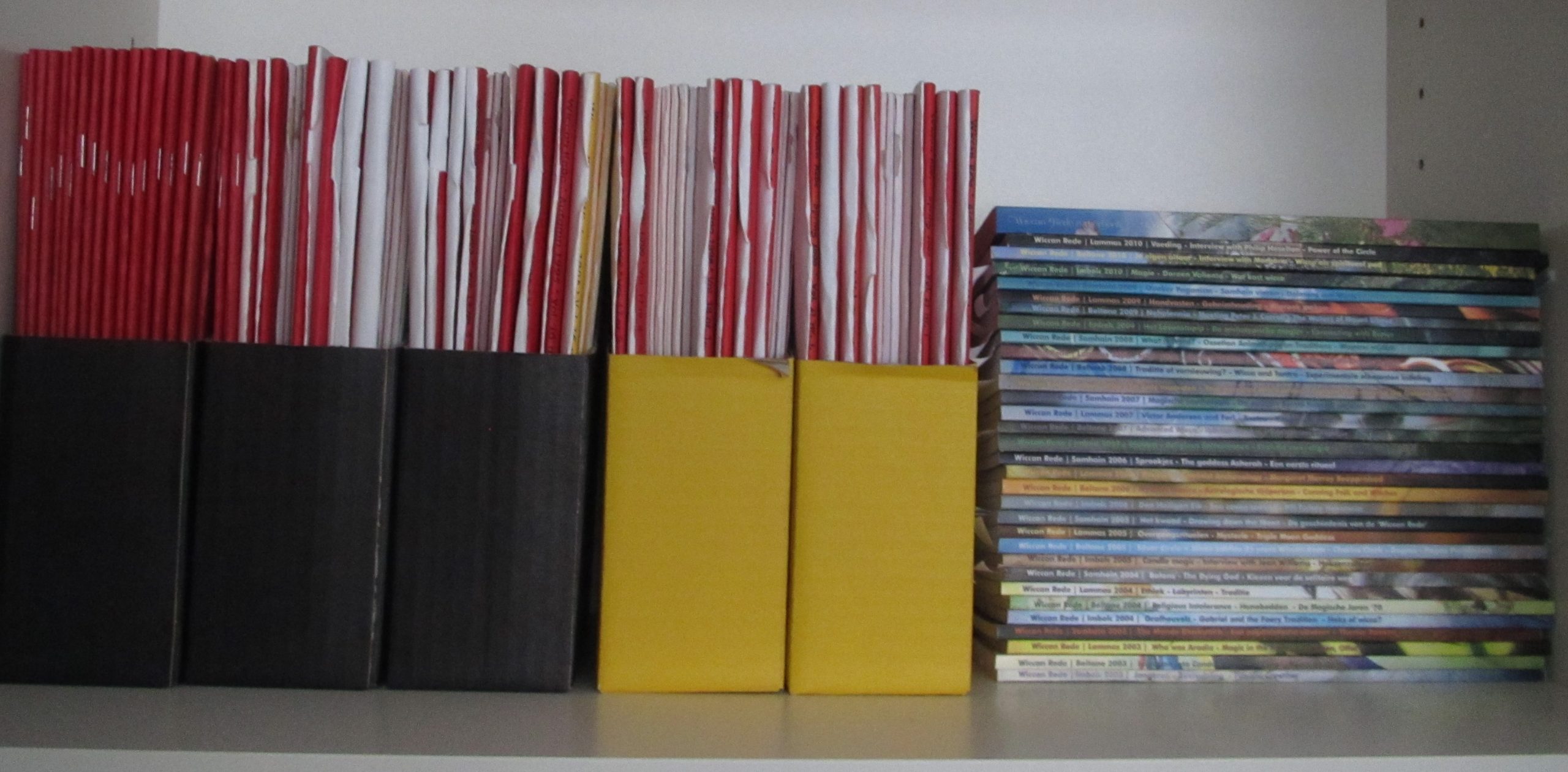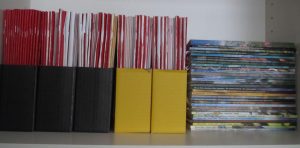From the ‘Celebrating 20 years!’ edition of ‘Wiccan Rede’ magazine, Volume 21, Number 1, March 2000, is this article by Fred Lamond. He recently passed to the Summerlands, see the obituary and the memorial article in this issue. We want to share his vision of 20 years ago with you, now that we celebrate 40 years of Wiccan Rede. Wiccan Rede then was already one of the longest standing Wiccan publications with a continuous history!
Is there still a role for magazines in the Internet Age? Well, as Fred asks: “Who would dream of storing on diskettes all the emails received from Pagan chat lists?” Did you store all your emails, Facebook entries etcetera, on diskettes or hard disks, and if you did: when do you ever read them again? 🙂
Jana
I was initiated into Gardnerian Wicca at Imbolc 1957. Looking back over the last 43 years they fall neatly into two equal periods. During the first 22 years, until 1979, covens were very secretive and kept themselves to themselves, networking at most with a mother coven. Alex Sanders’ somewhat lurid publicity in the early 1970’s had been resented by most Gardnerians as likely to aggravate rather than mitigate the negative image attached to witchcraft.
The last 21 years, on the other hand, have been a period of increasing openness of covens towards each other and to the outside world. Although Doreen Valiente’s Natural Magic came out in 1975 the turning point probably came with the almost simultaneous publication in the USA of Drawing Down the Moon by the National Public Radio journalist Margot Adler and The Spiral Dance by Starhawk. These books no longer represented witchcraft as a quaint survival from a rural Stone Age past, but as a new contemporary religion addressing the problems of our time, to which people of all walks of life could be proud of belonging. They triggered Pagan curiosity about fellow Pagans from the same or different traditions, which started the large scale Pagan and smaller Wiccan gatherings in North America, a trend that Europe has followed with larger and smaller national gatherings since 1990.
These gatherings have brought Wiccans and other Pagan traditions into greater contact with each other, and have greatly mitigated if not entirely eliminated mutual suspicions between Gardnerians and Alexandrians, and between Wiccans and Druids and Asatru. Such tensions as there now are in the Wiccan community are less and less concerned with ritual differences or lineage, and more with more fundamental questions, such as: Should we extend our networking to the Inter-Faith movement and the soon to be launched United Religions Initiative (to work together to save the planet’s ecology and promote human rights) or keep our distance from the Christian churches and the other patriarchal monotheistic religions?
“Wiccan Rede” is a child of that period, and it is remarkable that its first issue should have come out in 1980, only a year after the publication of the above mentioned two landmark books, and before personal computers and desktop publishing software made freelance inhouse publishing simple and relatively inexpensive. It is even more remarkable that it should have kept going for 20 years, during a period when so many Craft and Pagan magazines have appeared, only to disappear after a few issues. “Quest” is the only quarterly magazine with a longer continuous history, having first come out in 1970, but that promotes its editor Marian Green’s own personal solitary natural magic rather than Gardnerian Wicca as “Wiccan Rede” does. But when Quest appeared it could count on a substantial readership among the many Pagan and magical traditions already established in England at the time, whereas Merlin and Morgana had the courage to bring “Wiccan Rede” out in Holland at a time when there were hardly any other Wiccan covens in that country.
Naturally this greater openness has produced an explosion of membership in all Pagan movements in the last 20 years, but Wicca remains the largest and most sought after of these. From its English roots it has now spread not only to all parts of the English speaking world, but also to all the other Protestant dominated Northern European countries: the Netherlands – thanks largely to “Wiccan Rede” – but also Northern Germany and the Scandinavian countries. More recently it has begun to spread to Catholic Belgium: perhaps other Catholic countries will follow.
Is the rapid growth of Wicca during the last 20 years an unqualified blessing, or has something been lost in the process? The spread of Goddess worship, and of the gentler more sensitive values this promotes and produces, is obviously something we should welcome, as is the fact that those wishing to worship the Goddess in common no longer have to seek quite so hard for a coven nor wait quite so long until they are admitted. But the diminishing fear of persecution and the greater ease of entry have also tended to promote a more superficial approach to the Craft’s mysteries than in the 1950s when we were boldly counter-cultural.
There is a widespread attitude that Wicca is a set of religious rituals to be performed as word perfect as possible, while ignoring the deeper change of consciousness that these are supposed to promote.
Many HPS and HP are reluctant to challenge the boundaries of their initiates too much and thus perform rituals that do so symbolically, which are then largely ineffective in producing the ego-transcendence and mystical union which the forces of Life that these rituals were intended to promote. But there are still covens that do not compromise and their participation in gatherings may allow them to set an example that others will follow.
The Internet Age
During the last five years the Internet has burst on the scene and most owners of personal computers are now connected to it. Instant electronic mail has spread from one-to-one communications to writing for lists, which disseminate the message to all the list members. Wiccans and other Pagans have not been slow to establish their own lists: some only for initiated Wiccans; PFIChat and UKPagan for the wider community. Beside instant local news and gossip these lists are also used to discuss wider theological, ritual and policy issues that interest their members.
In this new environment, is there still a role for quarterly magazines like “Wiccan Rede” to play? I believe there is. The Internet’s immediate communications make them spontaneous, sometimes ill thought out but certainly ephemeral. Who would dream of storing on diskettes all the Emails received from Pagan chat lists? Articles for “Wiccan Rede” and similar magazines, on the other hand, will continue to be carefully thought out and elegantly drafted, and their back issues will be lovingly filed, allowing one to look up articles and debates that were published several years ago. If Merlin and Morgana are willing to continue to put their love and editorial effort into publishing it, I am sure I am expressing the readers’ opinions when I say: May the Force be with you!
Robert
Austria
Originally published in: 20 Years of Wiccan Rede: Spring 1980-Spring 2000.

